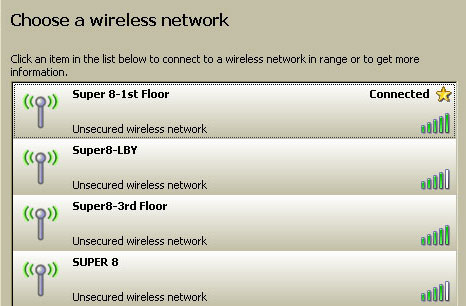New And Old Retail Meet Via QR Codes
Walking to the office today something caught my eye that I had to share, as pictured below.

Across from the former Marshall Field’s department store in Chicago on Washington Street is a bus stop. On that bus stop is an ad in Spanish for Google Android mobile phones. Prominent in the lower right corner of the ad is a QR code. What got my attention was the contrast of the old vs. new retail. The Field’s building, over a century old, with its iconic clock in comparison to the QR code on a non-English ad for a mobile device from a vendor barely over a decade old.
The real question is if these will continue to be 2 completely different retail concepts, or if they will come together as one?
Did you enjoy reading this? You are welcome to subscribe to The Hot Iron by RSS feed or by email.
My Takeaways From The Book Unleashing The Ideavirus By Seth Godin
Are all ideas timeless? This question came to mind recently as I started reading Unleashing the Ideavirus by Seth Godin, a book which was released about a decade ago. I was aware of the book and I have read others of Godin’s books like Purple Cow and Meatball Sundae and found those books interesting and energetic, but what about a business and marketing book written just as all the dot-coms were failing?
As I thought about this, I kept my thoughts focused to what I do here at The Hot Iron, writing my takeaways from the book rather than an in-depth review of it. Keeping true to my theme, here are my takeaways from Ideavirus.
My greatest takeaway is on the way things have been done before – you most certainly can try to do it as before, and it may work or it may not. Display billboards may work in Oshkosh, Wisconsin, but not necessarily in Chicago. But in Chicago there is the desire by the new owners of the Cubs to have a Toyota billboard in the outfield of Wrigley Field. Is this the best way to spend money by Toyota? From the Cubs perspective it is, as it is new money, and they only have to look to Fenway Park of an example of this. Billboards won’t be going away anytime soon, but they may start to fade more where they are not as effective.
Another takeaway is on the use of hyperlinks within the book, and if you lose anything in the telling of the story when the links are no longer valid. Throughout the book there’s mention to companies who are no longer in business. There’s also links to those companies, as well as other URL links, which are no longer valid. With a move more and more to eBooks and the pervasiveness of the URL, how should this handled in telling a story? Does the story lose something when a link is broken? Or should there be a hybrid, where the link is present, but also in the story/book is a detailed mention of the Web site or page linked to and more written within its pages about the company or entity? In my opinion noting is lost with the broken links, but nothing gained from them either.
Unleashing the Ideavirus is a quick and energetic read, and you can read it for free in many formats. A PDF is still available here on Seth Godin’s Web site, as it was originally released for free. You can also read it in pieces from DailyLit, as I did. It is also available for sale, and clicking on this affiliate link to Amazon.com will allow you to buy Unleashing the Ideavirus. And even though almost 10 years own, I feel Ideavirus is relevant today, probably moreso with the proliferation of social media, which did not exist then as it does today.
Did you enjoy reading this? You are welcome to subscribe to The Hot Iron by RSS feed or by email.
Super WiFi Value from Super 8 Motels
On a recent trip my family stayed at a Super 8 motel. It was everything we wanted – close to where we were visiting, clean, comfortable and at a great price. But above all, for me it had one of the best WiFi signals I have gotten in any hotel anywhere in the world, as you can see in the screengrab below.

The debate about the price vs. value for low and high-priced hotels will go on forever. Most all higher-end hotels charge for WiFi, and will even go as far as charge you for each computer you want to access it. And don’t get me wrong, I’ll take a Westin over a Super 8 any day, but at the end of that day, if I just need to briefly get online (as was the case when I was at this Super 8) I am not looking to go through a process and incur a US$15 charge to do so.
Where value is in the eye of the beholder, the last I checked WiFi doesn’t have eyes.
Did you enjoy reading this? You are welcome to subscribe to The Hot Iron by RSS feed or by email.
Next likemind Chicago on Friday April 16
 The next likemind will be Friday, April 16, 2010 in dozens of cities around the world.
The next likemind will be Friday, April 16, 2010 in dozens of cities around the world.
In Chicago, it will be at Argo Tea, 140 S Dearborn St. at the corner of Adams and Dearborn Streets in the Loop from 8:00 am to 10:00 am.
I call likemind a gathering of creative-minded people, from various disciplines including Internet, advertising, art, social media, et. al. For more information on likemind, you can read this great article on likemind from the New York Times.
No RSVP is required. You are also welcome to join the likemind Chicago Facebook group.
Did you enjoy reading this? You are welcome to subscribe to The Hot Iron by RSS feed or by email.
April Fools Day Blogging Thoughts
 If you read The Hot Iron yesterday, you may have noticed my post for Thursday, April 1, 2010 was an outright April Fools joke. The idea that Google can predict what you want to search on is surely one of debate, but the connection between your brain and the browser is not quite there yet, at least at a consumer level.
If you read The Hot Iron yesterday, you may have noticed my post for Thursday, April 1, 2010 was an outright April Fools joke. The idea that Google can predict what you want to search on is surely one of debate, but the connection between your brain and the browser is not quite there yet, at least at a consumer level.
After gauging the response to the post, as well as general commentary I saw around social media about April Fools Day and blogging, the question presents itself, “should you blog a joke on April 1?”
Analysis Paralysis
There is no shortage of opinion out there, and that can also relate to your blog as a whole as well as its individual post. When thinking about reactions to such a post of your own, there’s many angles to look at from. Some say you should ignore anything posted on April 1 in general, as it is a waste of time to sort through the jokes to find what is real. Others say your attempt at humor may not get through to an existing reader or a new reader, which could turn them off and away from your blog. Then others say that in a world where things are too serious, why not have some comic relief?
So summing it up, blogging on April 1 may be a no-win situation. But thinking about it more, isn’t that true for the other 364 days of the year as well?
Be True To Your Blog
My recommendation is to be true to the mission of your blog. By consistently writing relevant content and engaging with your community you should be in good shape. Over the long term, you should have increased readership – both in page hits and subscribers. Watching hits and activities on a day-to-day basis may not be relevant for you, as for whatever reason you may get people unsubscribing or a decrease in the number of hits. But like the stock market, you may have bumps along the road but over the long term you should gain.
Keeping true to The Hot Iron, I never try to take myself too seriously, so every once in a while snarky comments may come out, and yesterday that was in the form of an entire post. I will continue to strive to educate and engage in conversation, and hopefully you the reader will enjoy it as much as I do.
Did you enjoy reading this? You are welcome to subscribe to The Hot Iron by RSS feed or by email.

